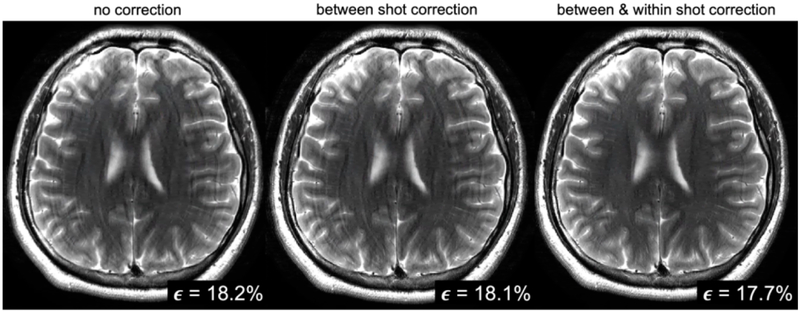Fig. 2: Jointly solving for motion.
In this reconstruction of a RARE style clinical T2 brain acquisition, the forward model included head rotation and translation unknowns, both between shots of the RARE sequence and within the shot. No tracking or navigator information was used, instead a joint search was performed for the head position parameters and the image based on only the kspace data from the array. A machine learning method was employed within the search to improve the non-convex optimization, but the final image derives only from the forward model inversion (using the best estimate of the motion parameters). From Haskell et al. (35)

